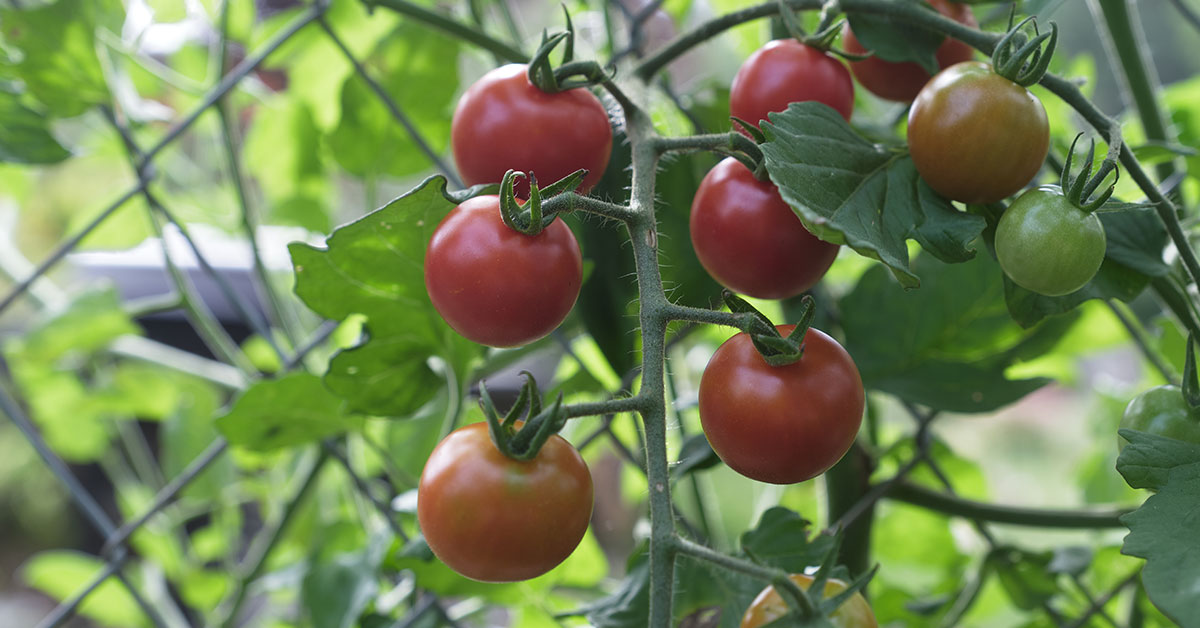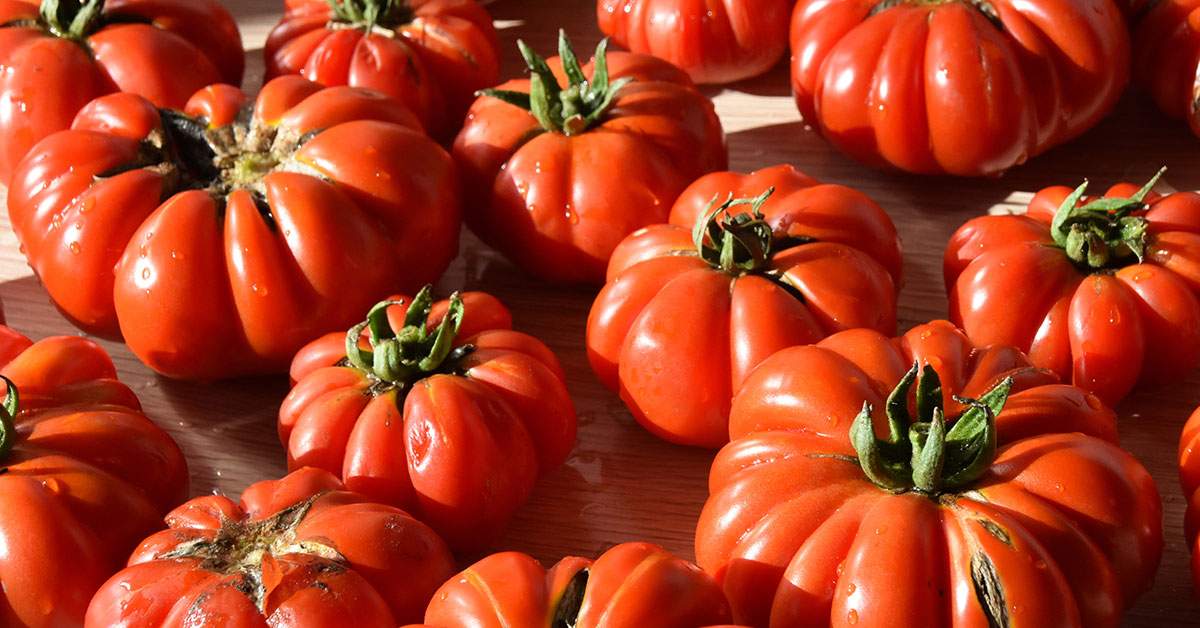When it comes to growing tomatoes, there are countless varieties to choose from. One of the most popular options among home gardeners is the Sweet 100 tomato. This cherry tomato variety is beloved for its incredibly sweet flavor and abundance of fruit.
Whether you’re an experienced gardener or just starting out, the Sweet 100 tomato is a great choice to add to your garden. In this blog post, we’ll take a closer look at what makes this tomato variety so special and how to grow your own Sweet 100 tomatoes at home.
What is a Sweet 100 Tomato?
Sweet 100 tomato is a popular cherry tomato variety that is widely cultivated in many parts of the world. As the name suggests, it is known for its sweet taste and is a favorite among many tomato lovers. This tomato variety is small, round, and red in color, and it is packed with flavor and nutrients.
The Sweet 100 tomato plant is an indeterminate variety, which means that it continues to grow and produce fruit throughout the growing season. It can grow up to six feet tall and requires staking or trellising to support its vines. The plant produces clusters of small, bite-sized tomatoes that are perfect for snacking or adding to salads.
One of the unique features of the Sweet 100 tomato is its high sugar content, which gives it its sweet taste. It also contains a high level of antioxidants, vitamins, and minerals, making it a healthy addition to any diet.
Whether you are a seasoned gardener or a beginner, the Sweet 100 tomato is an excellent choice for your garden. It is easy to grow, requires minimal maintenance, and produces a bountiful harvest. So, if you are looking for a delicious and healthy tomato variety to grow in your garden, the Sweet 100 tomato is definitely worth considering.
How to start Sweet 100 tomato seeds
Starting tomatoes from seed is a cost-effective and rewarding way to grow your own tomato plants. To begin, choose the tomato varieties that suit your preferences and growing conditions.
Fill seed trays or pots with a lightweight and well-draining seed starting mix, plant the seeds at the recommended depth, and provide adequate moisture and warmth for germination.
Once the seedlings have developed their second set of true leaves, they can be transplanted into larger containers or individual pots. Gradually acclimate the seedlings to outdoor conditions before transplanting them into the garden.
By following these basic steps, you can successfully start tomatoes from seed and enjoy a thriving crop of homegrown tomatoes.
Additional Resource: Our comprehensive guide to starting tomatoes from seed
Growing & care
Transplanting and caring for tomatoes outdoors involves a few essential steps. First, choose a sunny location with well-drained soil. Prior to transplanting, harden off the seedlings by gradually exposing them to outdoor conditions.
Dig a hole slightly larger than the root ball of each seedling and plant them, burying the stem up to the first set of leaves. Water the seedlings thoroughly after transplanting. Provide consistent watering, aiming for 1-2 inches of water per week.
Stake or cage the plants for support and prune indeterminate varieties by removing suckers. Monitor for pests and diseases, taking prompt action if necessary. By following these steps, you’ll set your tomato plants up for healthy growth and a fruitful harvest.
Additional Resource: How to transplant and care for tomatoes outdoors
Common tomato pests and diseases
Tomatoes are susceptible to various pests and diseases that can affect their health and productivity. Some common tomato pests include aphids, tomato hornworms, whiteflies, and cutworms. These pests can cause damage to leaves, stems, and fruit, leading to reduced plant vigor and yield.
Additionally, tomato plants can be affected by diseases such as early blight, late blight, fusarium wilt, and verticillium wilt. These diseases can cause leaf discoloration, wilting, and fruit rot. Proper identification and timely intervention are crucial to effectively manage these pests and diseases and ensure the successful growth of tomato plants.
Additional Resource: Comprehensive list of tomato diseases and pests and how to fix them
Common problems
As much as we love growing Sweet 100 tomatoes, they are not immune to problems. Here are some of the common problems that you might encounter when growing Sweet 100 tomatoes:
- Blossom-end rot: This is a common problem for many tomato varieties, including Sweet 100. Blossom-end rot is caused by a calcium deficiency in the plant, which can be exacerbated by inconsistent watering. To prevent blossom-end rot, make sure to water your plants consistently and evenly, and consider adding calcium to your soil.
- Cracking: Sweet 100 tomatoes are prone to cracking, which can occur when the fruit is exposed to too much moisture or inconsistent watering. To prevent cracking, make sure to water your plants consistently and avoid overwatering.
- Pest infestations: Just like any other tomato variety, Sweet 100 tomatoes can be susceptible to a variety of pests, including aphids, whiteflies, and tomato hornworms. To prevent pest infestations, make sure to regularly inspect your plants and remove any pests that you find. You can also use natural pest control methods, such as companion planting and neem oil.
- Disease: Sweet 100 tomatoes can be susceptible to a variety of diseases, including early blight and powdery mildew. To prevent disease, make sure to keep your plants well-ventilated and avoid overcrowding. You can also use a fungicide if necessary.
By being aware of these common problems and taking steps to prevent them, you can help ensure a successful harvest of delicious Sweet 100 tomatoes.
Uses for Sweet 100 tomatoes
Sweet 100 tomatoes are a type of cherry tomato that are known for their sweet and juicy taste. They are small in size, about the size of a grape, and are typically bright red in color. Sweet 100 tomatoes are a popular choice among gardeners and foodies alike, and are used in a variety of dishes. In this section, we will explore the different ways in which Sweet 100 tomatoes are typically used.
One of the most common uses for Sweet 100 tomatoes is in salads. Their small size makes them perfect for adding to a mixed greens salad, or for creating a tomato salad with other varieties of tomatoes. Sweet 100 tomatoes can also be used in pasta dishes, either in a traditional tomato sauce or in a creamy tomato sauce.
Another popular use for Sweet 100 tomatoes is in salsa. Their sweet flavor pairs well with spicy peppers and onions, and they add a burst of flavor to any salsa recipe. Sweet 100 tomatoes can also be used in bruschetta, either as a topping on the bread or mixed into the tomato mixture.
Sweet 100 tomatoes are also great for snacking. Their small size makes them perfect for popping into your mouth as a quick and healthy snack. They can be eaten on their own, or paired with other fruits and vegetables for a more filling snack.
Overall, Sweet 100 tomatoes are a versatile ingredient that can be used in a wide variety of dishes. Their sweet and juicy flavor makes them a favorite among gardeners and foodies alike, and they are sure to be a hit in any recipe.













